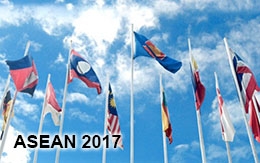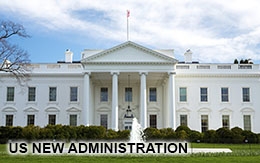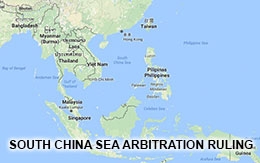Glowing Vista: Synergizing New Momentum from Regional Minilateralism
On 06 September 2021, while delivering the “JG Crawford Oration-2021” organised by the Australian National University, Dr S Jaishankar, Minister for External Affairs, Government of India, stated quite unequivocally, “The days of unilateralism are over, bilateralism has its own limits and as the COVID reminded us, multilateralism is simply not working well enough… the resistance to reforming international organizations compel us to look for more practical and immediate solutions”. In this statement may be found an official acceptance of a profound change that has occurred in the manner in which nation-states, even while accepting their quintessential and multifaceted interdependence, engage one another by formulating and executing collective geostrategies by which they seek to attain or advance their respective geoeconomic goals as well as their non-geoeconomic ones.

On 06 September 2021, while delivering the “JG Crawford Oration-2021” organised by the Australian National University, Dr S Jaishankar, Minister for External Affairs, Government of India, stated quite unequivocally, “The days of unilateralism are over, bilateralism has its own limits and as the COVID reminded us, multilateralism is simply not working well enough… the resistance to reforming international organizations compel us to look for more practical and immediate solutions”. In this statement may be found an official acceptance of a profound change that has occurred in the manner in which nation-states, even while accepting their quintessential and multifaceted interdependence, engage one another by formulating and executing collective geostrategies by which they seek to attain or advance their respective geoeconomic goals as well as their non-geoeconomic ones.
Before proceeding any further, it is considered important for clarity to be obtained and retained vis-à-vis the typological hierarchy involving geopolitics, geoeconomics, and geostrategies. Unfortunately, these are, all too often, placed on the same typological plane, thereby generating a host of cascading errors. In actual fact, every nation has a set of geoeconomic goals that it desires to attain for the economic and material wellbeing of its people. It also has another related but distinct set of non-geoeconomic goals whose attainment it seeks for the societal wellbeing of its people. Examples of non-geoeconomic goals would include cultural influence. Vietnamese scholars are quite familiar with the expression “cultural diplomacy” and recognise is to be an important tool of diplomacy, especially in the context of international connectivities and interdependence. Indeed, as the Vietnamese scholar, Trieu Huy Ha, points out, Vietnam, “has widely applied cultural diplomacy, which mutually creates trust between people... and “researchers are recently paying more scholarly attention to this relation and focusing on the role of cultural diplomacy in Vietnam in India’s significant expansion in Southeast Asia.”[i] Likewise, other non-geoeconomic goals are the pursuit of prestige, status, and even credibility. Prestige, rather than power — as Professor Yuen Foong Khong, of the Lee Kuan Yew School of Public Policy, National University of Singapore, puts it — “is the everyday currency of international relations, much as authority is the central ordering feature of domestic society”.[ii] Robert Gilpin has famously described prestige to be “reputation for power” and avers that it is “enormously important” because “if your strength is recognized, you can generally achieve your aims without having to use it.”[iii] While there is no intention (or ability in a paper of limited length such as this one) to delve into the extensive literature that exists on the subject of prestige and its role in international relations, suffice it to state that it is an important goal that nations seek to pursue and attain.
Having formulated these geoeconomic goals and non-geoeconomic goals, a State now devises geostrategies by which these goals might best be attained. It has become quite commonplace to hear the word ‘strategic’ being used as if it were an end in and of itself. Indeed, this word has often been used so loosely as to cause it to lose specificity altogether. It is, therefore, important to remember that the word ‘strategic’ is an adjective and, as such, its usage must always and necessarily possess a clear relationship with the noun ‘strategy’. In other words, one cannot have a ‘strategic’-anything without first having a ‘strategy’, and a ‘strategy’ must necessarily exist only to attain one or more goals. A ‘plan’ principally answers the questions, ‘what?’, ‘where?’, ‘by whom?’ and most importantly, ‘how?’. On the other hand, a ‘strategy’, which often comprises a number of plans that are organised temporally, or functionally (event-based), or spatially, or in any combination thereof, differs from a ‘plan’ in that it additionally answers the question ‘why?’. Strategy retains its focus upon the overall desired end-result, constantly reviewing every possible influencing factor, and in so doing, not only generates fresh plans but also discards failed, failing or inefficient ones. A ‘strategy’ may thus be thought of as an ordered collection of numerous subordinate spatial, temporal, and event-based plans, by which something that is desired may be attained — usually, though not always — over the long term. In the context of India, this “something that is desired” is the core national interest of India. It is, hence, axiomatic to begin by stating that the core national interest of India, as derived from the country’s Constitution, is ‘the material, economic and societal well-being of the people of India’. This is the desired end-state envisaged by New Delhi. India recognises that in the interconnected region and world in which it has been geographically located, the Indian economy cannot possibly be riding on some crest while the economies of its immediate- as well as its proximate maritime neighbourhood are wallowing in some trough. India, in other words, realises that all boats will rise on a rising tide and that the economic, material, and societal wellbeing of its own peoples cannot be attained without the simultaneous attainment of the economic, material, and societal wellbeing of the peoples of other nation-States in the region. It is this very realisation that has driven the formulation and enunciation of the acronym SAGAR[iv] as the encapsulation of India’s maritime policy (which is, like any policy, the written expression of a desired end-state). It would, by now, be obvious that ‘geostrategy’ lies at a lower typological level than does ‘geoeconomics’ and it is the combination of geostrategies, along with the ‘assurance’ and ‘insurance’ mechanisms that are developed and deployed to support and buttress these geostrategies, that constitutes ‘geopolitics’, which clearly lies at the apex level of the typology. While the goals (and the time-sensitive objectives that emanate from them) are purely those of the State that has identified and formulated them, the geostrategies that are evolved for their attainment are certainly impacted by the geostrategies formulated and executed by other States. This manifests itself in the degree of ease or difficulty that is encountered by any given State in its effort to attain its geoeconomic and non- geoeconomic goals. Consequently, States seek to identify and generate ‘assurance’ and ‘insurance’ mechanisms that would enhance its chances of success in the attainment of its own goals. Amongst these ‘assurance’ and ‘assurance’ mechanisms are cooperative constructs with other States as manifestations of each given State’s exercise of its available instruments of diplomacy and military power.
Insofar as ‘assurance’ and ‘insurance’ mechanisms are concerned, they encompass a very wide range. At one end of the spectrum are traditional, collective mechanisms and structures to deal with regional and global geopolitical complexities (which really boils down to a determination or at least an estimate of how to maximise the chances of success of one’s own geostrategies through collective cooperation at one or another level of intensity). These have tended to be concentrated in large, elaborate — often cumbersome and certainly intricate — multilateral constructs such as the UN (and its several agencies), socio-economic groupings such as G-20, and military alliances such as NATO that have often paradoxically ended-up first creating adversarial blocs and then dealing-with them through hard-security methodologies. ‘Multilateral’ constructs are sometimes differentiated from ‘bilateral’ and ‘unilateral’ ones based upon the relatively simple criterion favoured by International Relations (IR) scholars such as Renato Corbetta and William Dixon.[v] On the other hand, many others, such as John Ruggie[vi] seem to prefer a quality-based criterion, where “multilateralism needs the following three features: indivisibility, generalized organizing principles, and diffuse reciprocity. Indivisibility requires multilateralism to be based around socially constructed public good.”[vii]
Thus, along much the same logical line as has been used above in affixing the relationship between the adjective ‘strategic’ with the noun ‘strategy’, the word ‘multilateral’ is an adjective that qualifies or modifies the noun ‘institution’. Within an IR context, ‘institutions’ have been succinctly defined by Robert Keohane as “persistent and connected sets of rules, formal and informal, that prescribe behavioural roles, constrain activity, and shape expectations.”[viii] As Ruggie explains, “multilateralism denies “differentiation on a case-by-case basis according to power or individual preferences and demands for precise quid-pro-quo agreements”. An important additional qualification is offered by the political scientist, Professor Atsushi Tago, who has pointed out that “there needs to be cooperation on public goods and goods to meet the requirements of ... multilateralism. Additionally, the rules must be seen to apply to all countries: there must be no exceptions for powerful states.”[ix]
At the other end lies unilateralism. It is true that unilateral tactics sometimes induce others to make compromises that advance multilateral interests and that there are, indeed, recorded instances where a slavish adherence to multilateralism has become nothing more than a recipe for inaction. It cannot also be denied that speed and robustness are far achievable through unilateral action and that unilateral action might well be the most preferred mechanism when a nation-State perceives itself to be facing an immediate and existential threat — one that brings its very survival into question. After all, even the United Nations permits self-defence under Article 51 of its Charter, and one can easily imagine occasions where such self-defence could even be justifiably pre-emptive, such as when a terrorist organisation presents a strong or imminent threat. However, unilateralism as a generalised pattern of State behaviour is different from all this and is entirely unsupportable, especially when its underpinning is the political philosophy of exceptionalism. Yet there are existing and emerging nation-states that even today adhere to this extreme of international relations, proceeding to execute their own geostrategies without regard to the interests of other States and often without their support.
There has been relatively limited acceptance of the efficiency of any middle path, in which smaller, interlocking groupings of States engage one another, not by supplanting the more-traditional large multilateral constructs, but by supplementing the global aims and objectives of the latter through what might be termed decentralised consultations and sub-region-specific execution. Yet, this appears to be a pathway of choice, particularly within the broad geographical sweep of the Indo-Pacific region, which incorporates the Indian Ocean as well as the Pacific Ocean. Here, there are complexities that traditional multilateral constructs seem to be unable to tackle with the requisite degree of comprehensiveness. These challenges include — but are certainly not limited to — the assertive and aggressive rise of the People’s Republic of China and the consequent US-China and Sino-Indian tensions (limited to trade disputes in the former case but spilling over to serious territorial disputes in the latter one). Then there are the simmering but potentially explosive military stand-offs between North and South Korea, between North Korea and Japan, and between India and Pakistan. To this mix must be added the Myanmar crisis and the various manifestations of the ownership disputes in the Paracel and Spratly Island groups. On the one hand, these multifarious and difficult challenges serve to underscore the importance of cooperation. On the other, they frequently expose the ineffectiveness of not just traditional, large multilateral constructs but also medium-sized intergovernmental ones such as the Association of Southeast Asian Nations (ASEAN). In this convoluted international environment, a marked unwillingness to abandon multilateralism altogether and a persistent aversion to embrace the perils of unilateralism have led to the rise of smaller groupings of willing, able, or like-minded countries. — in other words, ‘minilateralism’. Minilateralism is most certainly a form of multilateralism. However, it would seem to one that reinforces the Corbetta-Dixon view that differentiates multilateralism from unilateralism and bilateralism in quintessentially quantitative terms. It tends towards as small a departure from the bilateralism (in the direction of multilateralism) as practicable. It seeks to retain the advantages of multilateralism — after all, as Harvard University’s globally renowned Professor Joseph Nye has so elegantly stated, “multilateralism is a mechanism to get other countries to share the burden of providing public goods. Sharing also helps foster commitment to common values”[x] while maximising the advantages of speed and robustness that are the more advantageous characteristics of unilateralism. The most visible contemporary forms of minilateralism would include the revival of the Quadrilateral Security Dialogue (QUAD), the Australia-United Kingdom-United States (AUKUS) partnership, and the newly formed grouping of Israel, India, the UAE, and the US, which is officially referred to as the ‘I2-U2’ framework but colloquially referred-to as the ‘West Asia Quad’. Even where military ‘assurance and insurance mechanisms’ are concerned, there is a definite trend to move away from the large military alliances of the Cold War period, such as NATO, or even the US treaty-alliance system in the Indo-Pacific involving, Australia, Japan, New Zealand, the Philippines, South Korea, Thailand, the UK, and the US. Instead, a new hierarchy is gaining traction— one of partnerships that are being forged — and formalised — based upon the number of policy-fields in which strategic convergence is felt to exist, as also the depth of this strategic convergence. India is at the heart of this new hierarchical construct. It is important to remember that strategic convergence is not only about shared interests, which could, in their basest form, be simply transactional, but also shared values, ideas, and norms, across various policy-fields. The greater the number of policy fields, the better aligned the values and behavioural norms, and the greater the range and depth of the convergence, the higher is the level within the hierarchy of the partnership. Thus, India has formalised ‘strategic partnerships’ with Afghanistan, ASEAN, Brazil, Canada, China, EU, France, Germany, Iran, Kazakhstan, Malaysia, Mongolia, Nigeria, Oman, Russia, Saudi Arabia, Seychelles, Singapore, South Africa, Tajikistan, and Uzbekistan. It has a ‘Special Strategic Partnership’ with South Korea, and ‘Comprehensive Strategic Partnerships’ with Australia, Indonesia, the UAE, the UK, and Vietnam. It also has a ‘Strategic and Global Partnership’ with Japan, and a ‘Special and Privileged Strategic Partnership’ with Russia, while maintaining a duly formalised ‘Comprehensive Global Strategic Partnership’ with the USA.
Within this new strategic conceptualisation, India is engaging the region through a host of minilateral constructs such as the Bay of Bengal Initiative for Multisectoral Technical and Economic Cooperation (BIMSTEC), the Asia-Africa Growth Corridor (AAGC), the Mekong Ganga Cooperation (MGC), the Colombo Security Conclave (CSC) [involving India, Maldives, Mauritius, and Maldives, with Bangladesh and Seychelles being observers], the Malaysia, Singapore, Indonesia, and Thailand (MIST) partnership for security within the Straits of Malacca and Singapore, etc. An even more focussed type of minilateral construct is the increasing number of ‘trilaterals’. India, for instance, is an active participant in at least five trilaterals — (1) India-Japan-Australia; (2) India-Indonesia-Australia; (3) India-France-Australia; (4) India-France-UAE; and (5) India-Maldives-Sri Lanka. As Professor Kate Sullivan de Estrada of Oxford University points out:
“The advantages of minilaterals are several. On traditional security issues, they can function as multipliers of military and economic capabilities and accelerators of in-group exchange. At the same time, minilaterals are ‘diversity tolerant.’ They permit relative policy autonomy among members because their agendas are flexible, ad hoc, and issue-focused, and they avoid the requirement that smaller powers doggedly serve the strategic goals of larger powers. They also reduce the risk of free-riding. Minilaterals can function as a site for the coordination of political dialogue outward and the sharing of intelligence inward and as a potential mechanism for the re-legitimation of global norms, such as those centred on maritime governance.”[xi]
Where maritime security is concerned, the requisite sharpness of focus is obtained by creating communities of the actual practitioners of maritime security, almost all of whom have intuitive, implicit, and explicit commonalities in respect of the requirement for a meaningful provision of public goods within the maritime domain. They share precisely those very characteristics of “generalized organizing principles, and diffuse reciprocity” that were specified by John Ruggie and referred-to in the earlier part of this paper.[xii]
Consequently, maritime security constructs tend to be far better able to absorb larger numbers, as witness the Western Pacific Naval Symposium (WPNS) which has 22 members and 5 observers (Bangladesh, India, Mexico, Pakistan, and Peru), as depicted in Figure 1, and the Indian Ocean Naval Symposium (IONS), which has almost the same numbers (23 members and 5 observers). Despite this, there are a number of smaller groupings here too, such as the MIST (Malaysia, Indonesia, Singapore, and Thailand), MALSINDO (Malaysia, Singapore, Indonesia), the Five Powers Defence Agreements (FPDA, incorporating Australia, Malaysia, New Zealand, Singapore, and the UK), the INDOMALPHI (Indonesia-Malaysia-Philippines) counter-piracy collective, and so on.
Fig 1: Source: Author
Several of these are designed to provide an insurance mechanism against the apprehension of even more aggressive behaviour by China.
It should not, however, be concluded that in the face of serious areas of dissonance between the constituent States, minilaterals can do much more than simply paper them over, temporarily at that. Further, the success of one minilateral may well weaken others. The Quad is a good example, where non-members find that the energy required to drive their own minilateral / trilateral agendas are being sucked away by the energy-demands of the Quad and its own programmes. This could lead to non-member countries of the Quad actually moving to create parallel but smaller structures that might end-up exacerbating rather than mitigating the region’s challenges. On the other hand, a careful process of debate and discussion could, indeed, so pave the way-ahead as to arrive at the desired ‘golden vista’ of international engagement.
****
[i] Trieu Huy Ha “Cultural Diplomacy in International Relations — A Case Study of Vietnam–India Diplomatic Relation Since Their Strategic Partnership”, Journal of Indian and Asian Studies, https://www.worldscientific.com/doi/10.1142/S271754132250005X
[ii] Yuen Foong Khong, “Power as Prestige in World Politics”. https://bellschool.anu.edu.au/sites/default/files/uploads/2019-05/powerasprestige.ia_.khong_.pdf
[iii] Robert Gilpin, “War and Change in World Politics”, Cambridge: Cambridge University Press, 1981
[iv] ‘Security and Growth for all in the Region’ (SAGAR) was enunciated in 2015 by India’s Prime Minister, Shri Narendra Modi, in his address in Mauritius, on 12 March 2015, on the occasion of the commissioning of the Mauritius National Coast Guard Ship, Barracuda, when he pronounced, “We seek a future for Indian Ocean that lives up to the name of SAGAR – Security and Growth for All in the Region.”. https://pib.gov.in/newsite/printrelease.aspx?relid=116881
[v] Renato Corbetta and William J Dixon, “Multilateralism, Major Powers, and Militarized Disputes” (2004), in Grand Valley State University Peer Reviewed Articles 3-2004. https://scholarworks.gvsu.edu/pls_articles/3
[vi] John Gerard Ruggie, “Multilateralism: the Anatomy of an Institution”, International Organization, Vol 46, No 3 (Summer, 1992). https://scholar.harvard.edu/files/john-ruggie/files/multilateralism.pdf
[vii] Ruggie, Ed, “Multilateralism Matters: The Theory and Praxis on an International Form”, New York, Columbia University Press, 1993, 11
[viii] Robert O. Keohane, “Multilateralism: An Agenda for Research”, International Journal Vol. 45, No. 4, Multilateralism: Old & New (Autumn, 1990), pp. 731-764. https://www.jstor.org/stable/40202705
[ix] Atsushi Tago, “Multilateralism, Bilateralism, and Unilateralism in Foreign Policy”, (Published online 22 August 2017). https://doi.org/10.1093/acrefore/9780190228637.013.449
[x] Joseph S Nye, Jr, “Unilateralism vs. Multilateralism”, 24 Sep 2002
https://www.project-syndicate.org/commentary/unilateralism-vs--multilateralism-2002-09
[xi] Kate Sullivan de Estrada, “Can Minilaterals Deliver a Security Architecture in the Indian Ocean?”, Asia Policy 28, No 3 (2021), 40-44. doi:10.1353/asp.2021.0032
[xii] Ruggie, “Multilateralism... etc”, Supra Notes 6 and 7
Vice Admiral Pradeep Chauhan, AVSM & Bar, VSM, as well as the Director-General, National Maritime Foundation, New Delhi, India.










